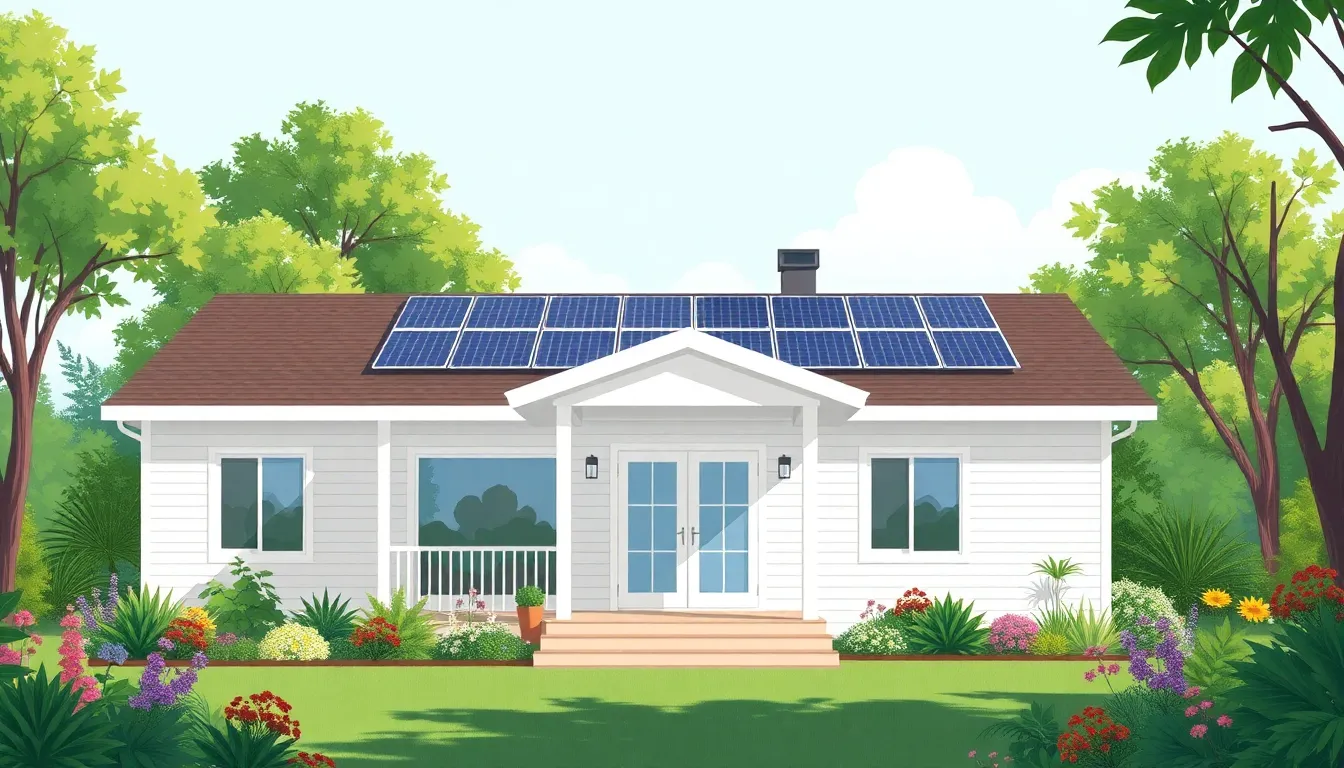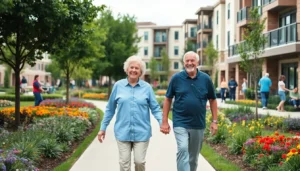Retirement should be a time for relaxation and adventure, not a headache over housing options. Enter modular retirement homes—where comfort meets clever design and a sprinkle of fun. Imagine a cozy space that adapts to your needs faster than a cat can knock over a vase. These homes offer flexibility, affordability, and a dash of style, making them the perfect solution for those looking to downsize without compromising quality of life.
With modular homes, retirees can finally say goodbye to the days of cookie-cutter living. Each unit is customizable, making it easy to create a space that feels uniquely theirs. Plus, who wouldn’t want a home that’s built faster than a pizza delivery? As the world of retirement living evolves, modular homes are leading the charge, proving that aging gracefully can also mean living smartly.
Table of Contents
ToggleOverview Of Modular Retirement Homes
Modular retirement homes offer an innovative approach to senior living. Designed for comfort, these structures address the unique needs of retirees. Flexibility stands out as a defining feature, allowing for customizable layouts and finishes that cater to individual preferences. Affordability plays a crucial role in making modular homes an appealing option for many retirees, as they often come with lower construction and maintenance costs.
Constructed off-site in controlled environments, modular homes reduce waste and construction time. This efficiency translates to quicker move-ins for those eager to start their new lifestyle. Many models incorporate eco-friendly materials and energy-efficient designs, promoting sustainable living. Accessibility features, such as wider doorways and single-level layouts, enhance safety and convenience for older adults.
Incorporating technology into modular designs has gained traction, with smart home features that support independent living. Monitoring systems, automated lighting, and climate control systems all contribute to increased comfort and security. Socialization opportunities also arise from community-focused designs, fostering connections among residents.
A variety of modular retirement home options exists, ranging from compact units to larger duplexes and multi-family setups. Certain communities even offer shared amenities like fitness centers, gardens, and communal spaces. These homes filter into diverse lifestyles, providing an attractive alternative for those seeking to downsize while maintaining a vibrant, active lifestyle.
Benefits Of Modular Retirement Homes

Modular retirement homes offer numerous advantages that significantly enhance the living experience for retirees. Key benefits include cost-effectiveness and environmental sustainability.
Cost-Effectiveness
Cost-effectiveness stands out as a primary advantage of modular retirement homes. Modular construction typically requires lower labor and material costs, resulting in more affordable pricing for buyers. Savings extend to lower utility bills due to energy-efficient designs and materials. Homeowners often encounter reduced maintenance expenses, driven by durable building materials that require minimal upkeep over time. Many retirees find that these homes fit well within their budgets, allowing them to allocate funds towards other aspects of their retirement. Flexibility in financing options further enhances affordability, making modular homes an attractive choice for those looking to downsize.
Environmental Sustainability
Environmental sustainability is a pivotal aspect of modular retirement homes. Constructing these homes off-site minimizes waste generation during the building process. Eco-friendly materials, often utilized in their design, contribute to reduced carbon footprints and promote energy efficiency. Homeowners benefit from better air quality and lower energy consumption, leading to long-term savings on utility costs. Additionally, modular homes often incorporate renewable energy options, such as solar panels, further enhancing their sustainability. By choosing a modular retirement home, retirees embrace not only a comfortable lifestyle but also a commitment to environmentally conscious living.
Design Features Of Modular Retirement Homes
Modular retirement homes feature innovative designs tailored for comfort and convenience. Key aspects include customization options and accessibility features that cater to the diverse needs of retirees.
Customization Options
Customization options enhance the appeal of modular retirement homes. Homeowners choose layouts that fit their preferences and lifestyle. Customizable spaces may include additional rooms, open floor plans, or multi-purpose areas. Interior finishes can reflect personal styles, from contemporary designs to more traditional aesthetics. This flexibility allows retirees to create unique living environments that cater to their specific needs. Outdoor spaces often accompany these options, enabling residents to design gardens or patios that promote relaxation and social interaction.
Accessibility Features
Accessibility features play a crucial role in modular retirement homes. Many designs incorporate wider doorways and hallways to accommodate mobility devices. Lower countertops and lever-style handles make daily tasks simpler. Non-slip flooring ensures safety in common areas, while bright lighting enhances visibility. Additionally, bathrooms may include grab bars and walk-in showers for increased convenience. Smart home technology widely integrates into these features, allowing for easy adjustments and monitoring. Overall, these elements ensure seniors maintain their independence while enjoying a safe and functional living environment.
Challenges And Considerations
Modular retirement homes come with several challenges and considerations that potential buyers should evaluate.
Zoning Regulations
Zoning regulations play a crucial role in the feasibility of modular retirement homes. Local authorities often impose specific zoning laws that dictate where these homes can be situated. Compliance with these regulations may require additional time and research. Modular homes might face restrictions on size, height, and even architectural style, limiting design flexibility. Understanding these factors ensures that prospective homeowners remain aligned with local policies when choosing a site. Engaging with local planners or real estate professionals aids in navigating these complex regulations effectively.
Financing Options
Navigating financing options for modular retirement homes presents unique opportunities and challenges. Various lenders offer loans specifically tailored for modular construction, but interest rates and terms can vary significantly. Assessing financing options involves consideration of conventional mortgages and specialized loans. Buyers should evaluate factors such as down payment requirements, credit scores, and overall affordability. Exploring grants and assistance programs designed for seniors can also provide additional financial support. Meeting with financial advisors ensures informed decisions regarding financing, maximizing budget allocations for future retirement needs.
Modular retirement homes offer a fresh perspective on senior living that combines comfort with innovation. With their customizable designs and eco-friendly features they cater to the unique needs of retirees. These homes not only provide affordability but also promote a vibrant community lifestyle.
As retirees look to downsize they can find peace of mind in the flexibility and efficiency modular homes provide. Embracing this modern approach allows seniors to enjoy their golden years in a space that reflects their personal style and supports their independence. With careful consideration of local regulations and financing options retirees can confidently make the transition to a modular retirement home that meets their needs.








